Abstract
Cooling is known to prolong survival in newborn animals when used before the onset of asphyxia. It has therefore been advocated as a treatment for birth asphyxia in humans. Since it is not possible to cool a human baby before the onset of birth asphyxia, experiments were designed to test the effect of cooling after asphyxia had already started. Newborn rabbits were asphyxiated in 100% nitrogen and were cooled either quickly (drop of 1 degree C in 45 s) or slowly (drop of 1 degree C in 2 min) at varying intervals after asphyxia had started. When compared with controls, there was an increase in survival only when fast cooling was used early in asphyxia. This fast rate of cooling is impossible to obtain in a human baby weighing from 30 to 60 times more than a newborn rabbit. Further litters of rabbits were asphyxiated in utero. After deliver they were placed in environmental temperatures of either 37 degrees C, 20 degrees C, or 0 degrees C and observed for spontaneous recovery. The animals who were cooled survived less often than those kept at 37 degrees C. The results of these experiments suggest that hypothermia has little to offer in the treatment of birth asphyxia in humans.
Full text
PDF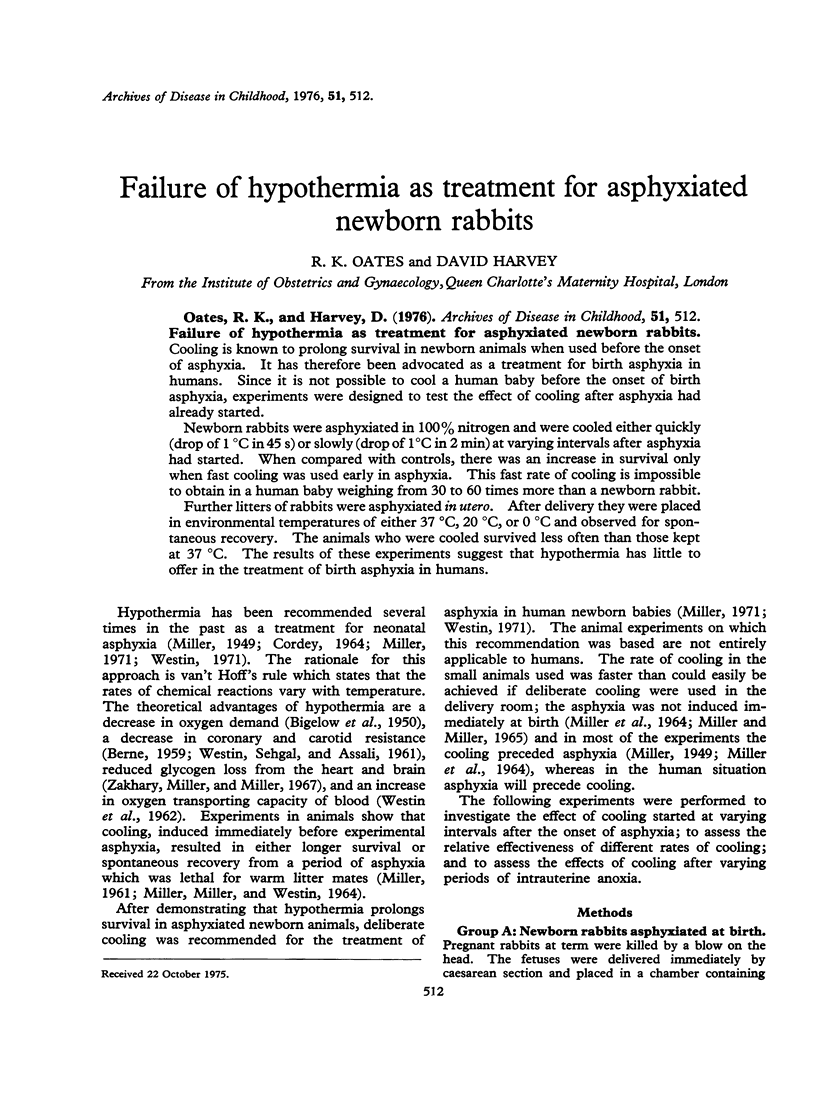
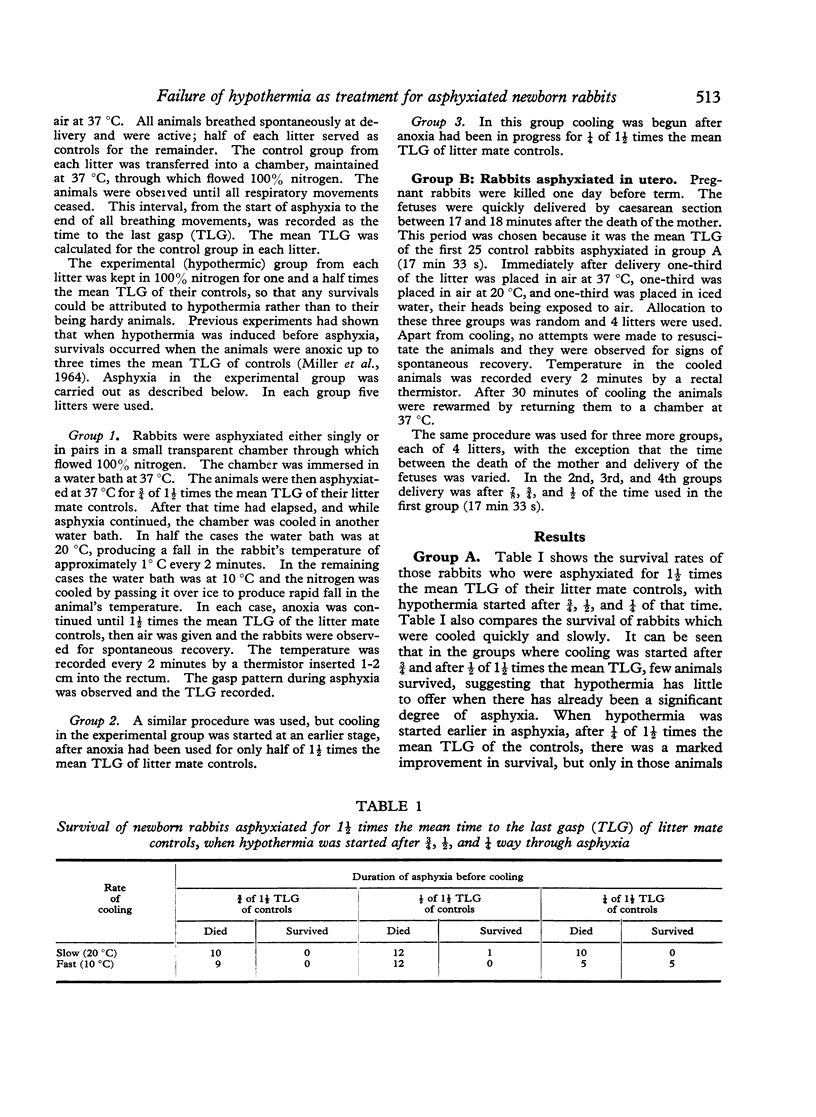
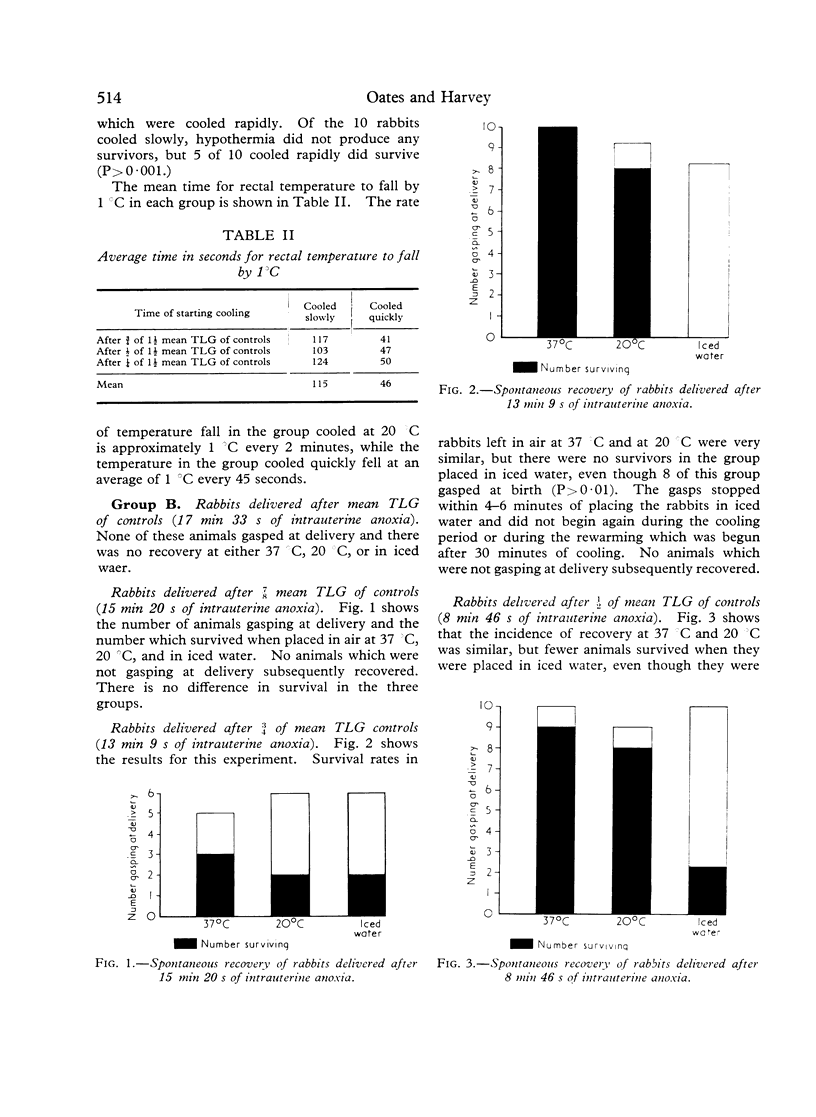
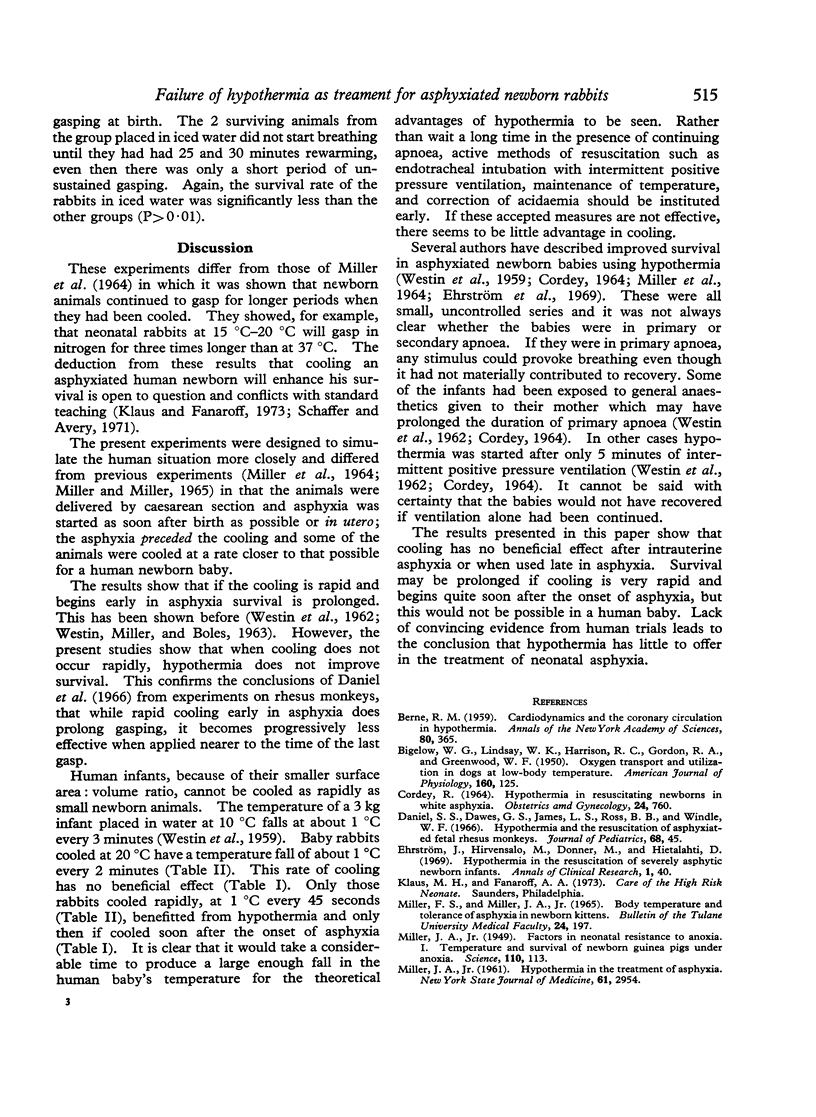
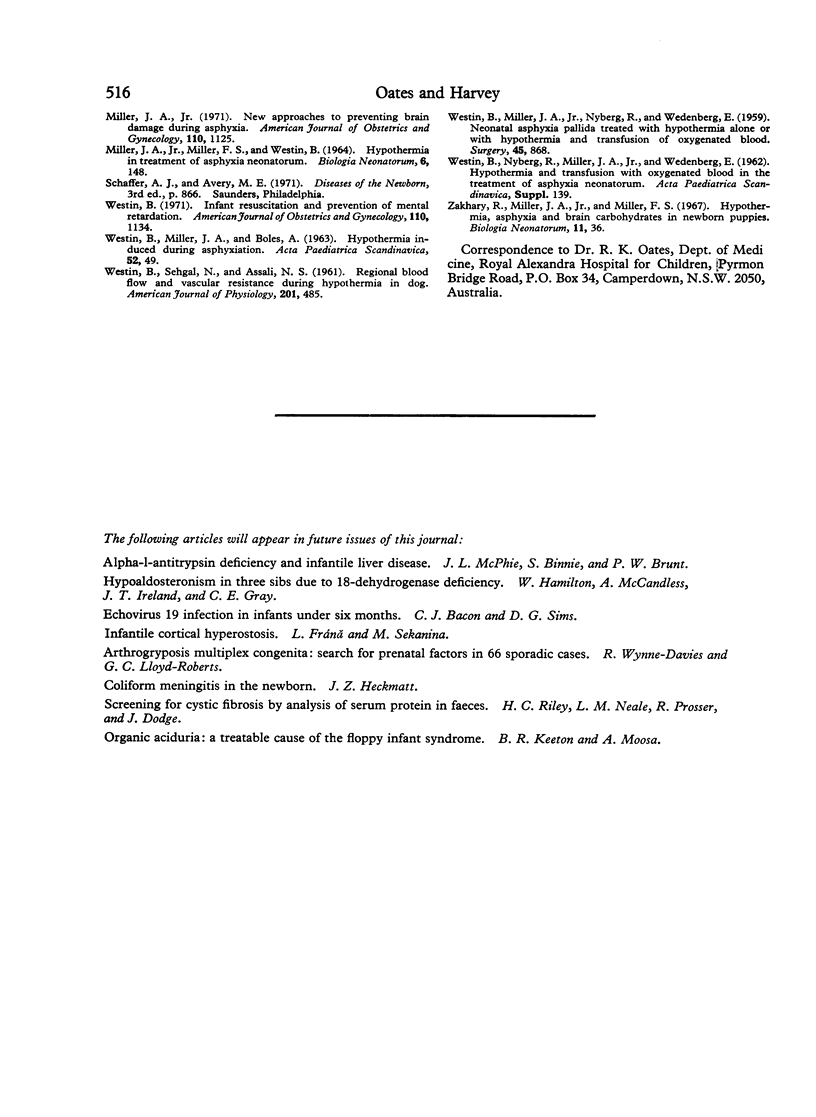
Selected References
These references are in PubMed. This may not be the complete list of references from this article.
- BERNE R. M. Cardiodynamics and the coronary circulation in hypothermia. Ann N Y Acad Sci. 1959 Sep 14;80:365–383. doi: 10.1111/j.1749-6632.1959.tb49217.x. [DOI] [PubMed] [Google Scholar]
- BIGELOW W. G., LINDSAY W. K. Oxygen transport and utilization in dogs at low body temperatures. Am J Physiol. 1950 Jan;160(1):125–137. doi: 10.1152/ajplegacy.1949.160.1.125. [DOI] [PubMed] [Google Scholar]
- CORDEY R. HYPOTHERMIA IN RESUSCITATING NEWBORNS IN WHITE ASPHYXIA; A REPORT OF 14 CASES. Obstet Gynecol. 1964 Nov;24:760–767. [PubMed] [Google Scholar]
- Daniel S. S., Dawes G. S., James L. S., Ross B. B., Windle W. F. Hypothermia and the resuscitation of asphyxiated fetal rhesus monkeys. J Pediatr. 1966 Jan;68(1):45–53. doi: 10.1016/s0022-3476(66)80421-3. [DOI] [PubMed] [Google Scholar]
- Ehrström J., Hirvensalo M., Donner M., Hietalahti J. Hypothermia in the resuscitation of severely asphyctic newborn infants. A follow-up study. Ann Clin Res. 1969 May;1(1):40–49. [PubMed] [Google Scholar]
- MILLER J. A., Jr, MILLER F. S., WESTIN B. HYPOTHERMIA IN THE TREATMENT OF ASPHYXIA NEONATORUM. Biol Neonat. 1964;6:148–163. doi: 10.1159/000239893. [DOI] [PubMed] [Google Scholar]
- Miller J. A. Factors in Neonatal Resistance to Anoxia. I. Temperature and Survival of Newborn Guinea Pigs Under Anoxia. Science. 1949 Jul 29;110(2848):113–114. doi: 10.1126/science.110.2848.113. [DOI] [PubMed] [Google Scholar]
- Miller J. A., Jr New approaches to preventing brain damage during asphyxia. Am J Obstet Gynecol. 1971 Aug 15;110(8):1125–1133. doi: 10.1016/0002-9378(71)90312-7. [DOI] [PubMed] [Google Scholar]
- WESTIN B., MILLER J. A., Jr, BOLES A. Hypothermia induced during asphyxiation: its effects on survival rate, learning and maintenance of the conditioned response in rats. Acta Paediatr. 1963 Jan;52:49–60. doi: 10.1111/j.1651-2227.1963.tb04078.x. [DOI] [PubMed] [Google Scholar]
- WESTIN B., MILLER J. A., Jr, NYBERG R., WEDENBERG E. Neonatal asphyxia pallida treated with hypothermia alone or with hypothermia and transfusion of oxygenated blood. Surgery. 1959 May;45(5):868–879. [PubMed] [Google Scholar]
- WESTIN B., SEHGAL N., ASSALI N. S. Regional blood flow and vascular resistance during hypothermia in dog. Am J Physiol. 1961 Sep;201:485–491. doi: 10.1152/ajplegacy.1961.201.3.485. [DOI] [PubMed] [Google Scholar]
- Westin B. Infant resuscitation and prevention of mental retardation. Am J Obstet Gynecol. 1971 Aug 15;110(8):1134–1138. doi: 10.1016/0002-9378(71)90313-9. [DOI] [PubMed] [Google Scholar]
- Zakhary R., Miller J. A., Jr, Miller F. S. Hypothermia, asphyxia and brain carbohydrates in newborn puppies. Biol Neonat. 1967;11(1):36–49. doi: 10.1159/000240053. [DOI] [PubMed] [Google Scholar]


